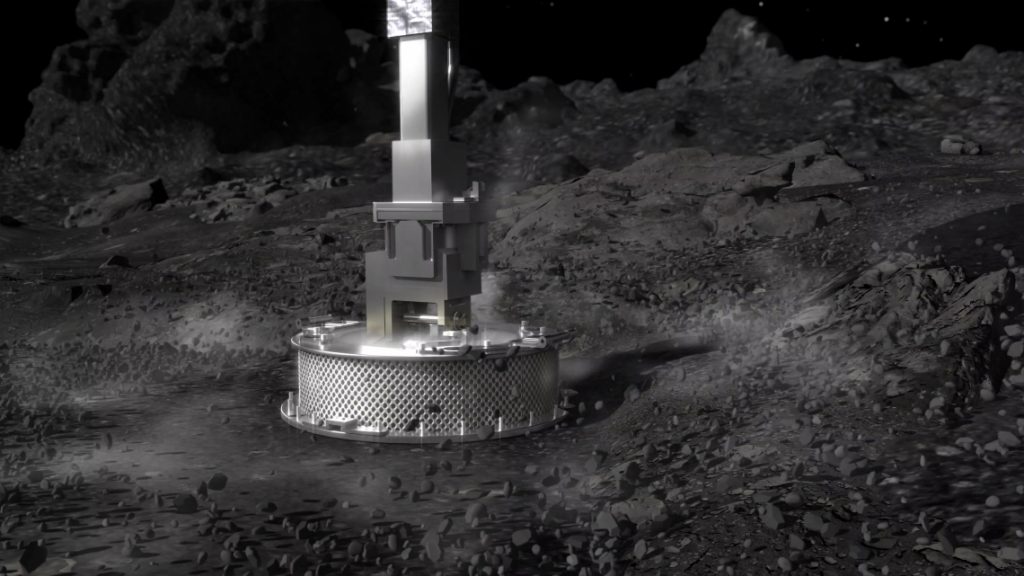
We turn to a little rubble pile in space that is near and dear to our hearts — Bennu. We are only FOUR days away from the upcoming touch and go (TAG) sample collection maneuver, and all the press releases are coming out. Suddenly, it’s OSIRIS-REx that is our needy little spacecraft. But I think we should forgive it because a) it’s already at its destination, b) it’s about to do something really cool, and c) we all worked really hard to map this asteroid.
For those unfamiliar with the project, last year, CosmoQuest hosted a citizen science project called Bennu Mappers. And boy, did we map. We mapped boulders and rocks and rocks and pebbles and more rocks. And then the OSIRIS-REx team analyzed our thousands of images and picked four possible sampling locations. In the end, they selected Nightingale Crater, and that is where our favorite little craft will sample next week.
The mechanism for this sample is pretty neat. The sampling head shown here will, per the press release: make contact with Bennu’s surface for around 10 seconds. When the spacecraft detects contact, it will fire one of three nitrogen gas bottles, and much like a reverse vacuum cleaner, stir up surface material – called regolith – inside the sampler head before the spacecraft backs away.
There’s even a backup system that will use sticky pads to collect material if the nitrogen gas fails to work for some reason.
Then, so long as the sample is at least 60 grams, the craft will stow the sample and perform a pirouette in space to reinsert itself into Bennu’s orbit. And then we get to wait until 2023 for that sample to return to Earth for analysis.
I will note that if that first attempted TAG doesn’t collect the required 60 grams, there is the possibility for another go. Or two. There are three nitrogen gas canisters after all.
And we’ll be covering the sampling live next week, so please stay tuned.




 Join the Crew!
Join the Crew!
 Escape Velocity Space News
Escape Velocity Space News
0 Comments